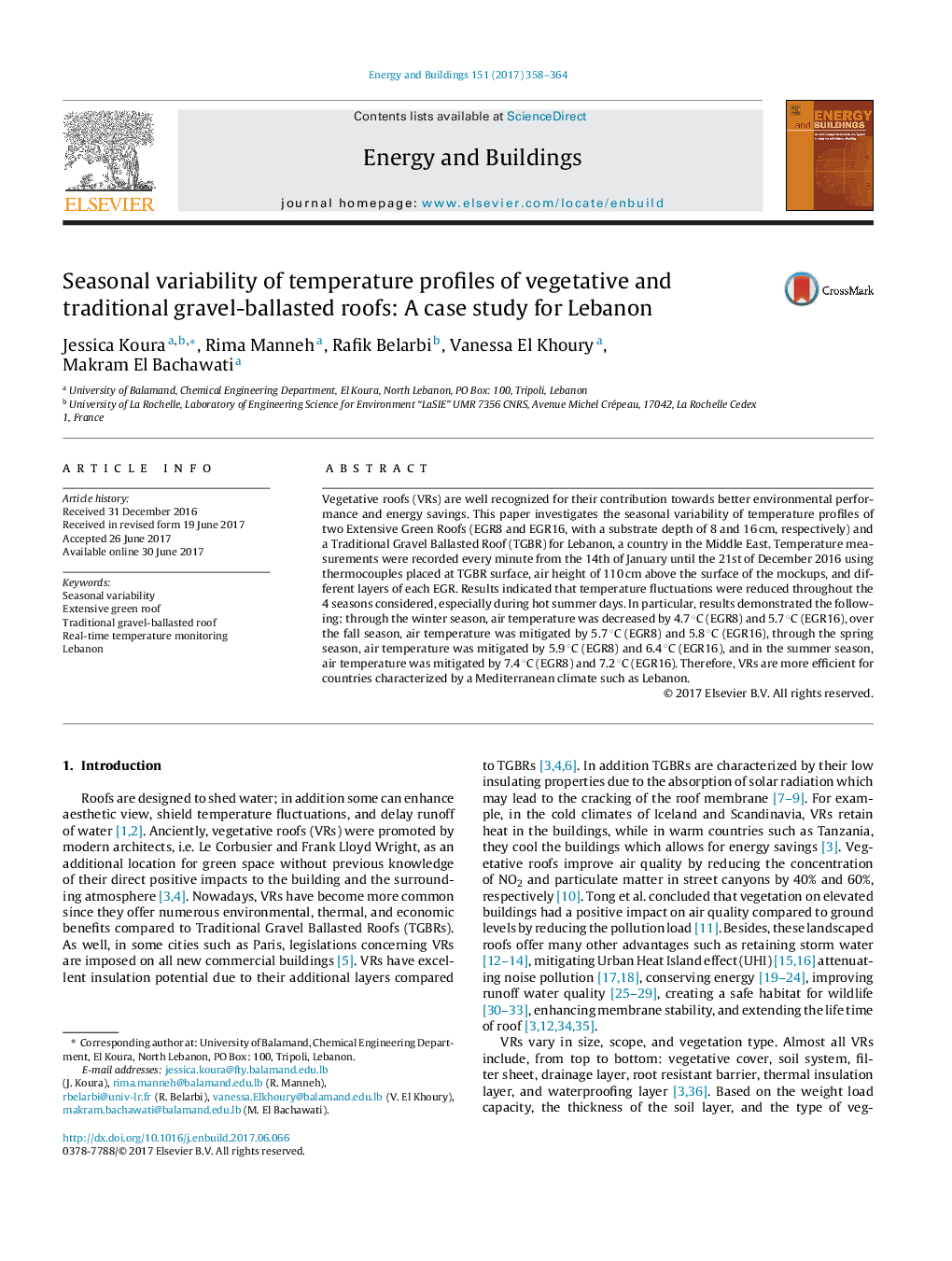| Article ID | Journal | Published Year | Pages | File Type |
|---|---|---|---|---|
| 6481100 | Energy and Buildings | 2017 | 7 Pages |
Vegetative roofs (VRs) are well recognized for their contribution towards better environmental performance and energy savings. This paper investigates the seasonal variability of temperature profiles of two Extensive Green Roofs (EGR8 and EGR16, with a substrate depth of 8 and 16 cm, respectively) and a Traditional Gravel Ballasted Roof (TGBR) for Lebanon, a country in the Middle East. Temperature measurements were recorded every minute from the 14th of January until the 21st of December 2016 using thermocouples placed at TGBR surface, air height of 110 cm above the surface of the mockups, and different layers of each EGR. Results indicated that temperature fluctuations were reduced throughout the 4 seasons considered, especially during hot summer days. In particular, results demonstrated the following: through the winter season, air temperature was decreased by 4.7 °C (EGR8) and 5.7 °C (EGR16), over the fall season, air temperature was mitigated by 5.7 °C (EGR8) and 5.8 °C (EGR16), through the spring season, air temperature was mitigated by 5.9 °C (EGR8) and 6.4 °C (EGR16), and in the summer season, air temperature was mitigated by 7.4 °C (EGR8) and 7.2 °C (EGR16). Therefore, VRs are more efficient for countries characterized by a Mediterranean climate such as Lebanon.
